Content
- What allergens are found in onions?
- What are the symptoms of onion allergy?
- Typical symptoms in adults
- In children
- How to prevent allergic reactions to onions?
- First aid for severe complications
- How to treat onion allergy?
- Drug therapy
- Traditional methods
- Onion allergy video
A rare variant of food allergies it is considered an inadequate immune response to the protein substances contained in onions. The vegetable has become widespread in various gastronomic cultures and is used to prepare numerous hot dishes, salads, cold cuts.
What allergens are found in onions?
The plant product is saturated with protein-type phytoncides, which serve as provocateurs of reactions of individual intolerance. Such substances are included in the category of lipid-transporting chemical compounds, united by the common English-language abbreviation LTP.
Onion allergy occurs when diallyl disulfide, aliin or profilin are absorbed into the blood. The first is considered the main provocateur of anaphylactic reactions, causing skin irritation and respiratory complications.
The substance belongs to the class of organic disulfides of plant origin. Diallyl disulfide acts on the cationic channels of transient receptor potentials of cell membranes.
Such penetration is perceived by the immune system of some people as hostile.
Diallyl disulfide is a part of:
- latex;
- some fruits;
- garlic;
- cereals;
- wormwood;
- ragweed.
The substance is considered to be the culprit of typical seasonal allergies to fruits, pollen, and flowering products. Diallyl disulfide is thermally unstable. Phytoncid decomposes when heated and frozen.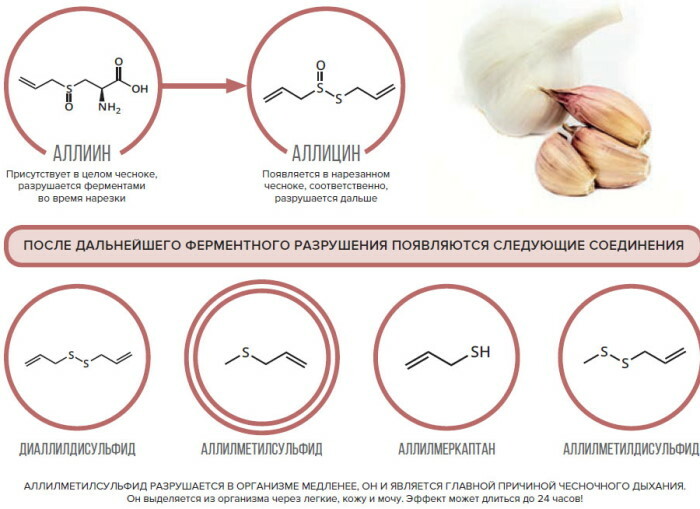
In patients with individual intolerance to the LTP protein, anaphylactic reaction to this carrier of lipid molecules and fatty acids often occurs only when fresh onions are ingested.
Another allergen in a popular gastronomic ingredient is called profilin. The biological role of phytoncidal protein is to bind globular and fibrillar organic actin components of muscle tissue.
An asymmetrical immune response often occurs when onion juice saturated with profilin gets on the skin or mucous membrane. Contact of the substance with biological structures enhances the production of IgE immunoglobulins. They bind with the tail part to the Fc-receptors of tissue cells of the myeloid line, which causes an allergic reaction.
Profilin is involved in the spatio-temporal control of the multiplication of active filaments, which is necessary for:
- skeletal development;
- strengthening the muscle frame;
- the functioning of internal organs;
- oppression of pathogenic microorganisms.
Allergic reactions are provoked by the allicin contained in onions, an organic substance of the class of vegetable sulfoxides with fungicidal and antibacterial properties.
What are the symptoms of onion allergy?
The clinical picture depends on the age, the degree of individual intolerance, the amount of vegetables consumed, the duration of contact of the product with the skin and mucous membranes.
In adults and children, the aggressive response of the immune system has different tangible signs. The severity of an allergic reaction increases in the presence of systemic pathologies, chronic respiratory diseases, dermatological disorders.
General symptoms include the following manifestations:
- hives-type skin rash;
- hyperemia of the mucous membranes and superficial epidermis in different parts of the body;
- tingling in the terminal phalanges of the fingers, like paresthesia;
- itching in the dental cavity;
- irritated state of the visual organ with profuse lachrymation;
- angioedema of the tissues of the face, larynx, neck;
- sinus congestion;
- tachycardic signs;
- shortness of breath;
- cephalgic syndromes of varying intensity;
- nausea;
- activation of the gag reflex;
- diarrhea;
- pain in the abdominal cavity after eating onions;
- convulsive states of smooth muscle fibers.

Allergic symptoms are individual and depend on the physiological characteristics of the body. Anaphylactic shock requiring immediate medical attention occurs in extremely rare situations when phytoncides contained in a vegetable are only one of the provoking factors.
Typical symptoms in adults
Allergies to onions, vegetable dust, husks or odors are more often found in employees of food industries, agricultural enterprises, packers of finished products in the form of seeds or spices.
In adult patients, the immune response is rarely overt. You can regularly eat a fresh vegetable or meals containing it without realizing that you have this type of food allergy.
Nonspecific and rapidly resolving symptoms are often attributed to other diseases or physiological conditions.
Among the common signs of allergic reactions in adults are:
- Cramping pain in the abdomen after eating. In most patients, they disappear within 10-15 minutes. The symptom is accompanied by inflammation of the appendix, stomach ulcers, pancreatitis. Therefore, it is rarely attributed to the individual immunity of onions.
- Nausea and vomiting. Such manifestations are characteristic of food intoxication when eating stale products.
- Dyspepsia. The symptom complex is caused by numerous reasons, which blurs the clinical picture of allergy to onion proteins. For intestinal infections and poisoning with spoiled foods, diarrhea is characteristic.
- Respiratory disorders. Periodic respiratory difficulties occur in patients with bronchial asthma, obstructive pulmonary disease, a history of cardiovascular dysfunctions.
Nonspecific skin rash and short-term itching symptoms are often attributed to triggers other than food allergies. Adults often develop an immune harsh response to onion odor, cosmetics containing LTP proteins.
In children
Juvenile patients are more vulnerable to food allergies. The final formation of a protective mechanism that prevents immunopathological reactions is completed by the age of 7.
It is not recommended to include onions in the diet of preschoolers because of the high risk of developing an anaphylactic process.
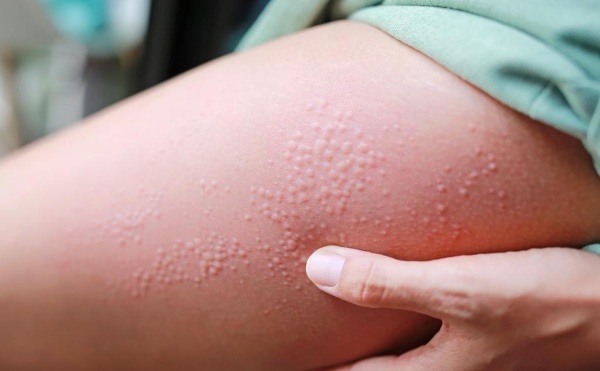
Symptoms typical for children are expressed in:
- redness of the skin on the arms, chest, back;
- the appearance of a small epidermal rash;
- the formation of papules filled with liquid exudate;
- swelling of the epithelial covering of the eyes due to a violation of the permeability of the vascular walls;
- peeling of the scalp;
- rhinitis of allergic genesis;
- diathesis;
- dermatitis;
- gastric disorders with cutting pains;
- exhausting cough.
Some anaphylactic symptoms are similar to those of viral infections and seasonal colds. This complicates the differential diagnosis of food allergies in children.
How to prevent allergic reactions to onions?
Heat treatment of the vegetable leads to the decomposition of LTP proteins into physiologically active components without anaphylactic properties. Avoid contact with plant foods saturated with organic provocateurs of an inadequate immune response.
Allergies to food raw materials containing diallyl disulfide, aliin or profilin are caused by garlic, recchio, chives. In addition to fresh onions, you need to exclude other representatives of the vegetable family from your own diet.
The list of prohibited foods includes:
- shallots;
- leek;
- batun;
- wild garlic;
- kurrat;
- wormwood, used in some Asian food cultures as a condiment or brew like tea.
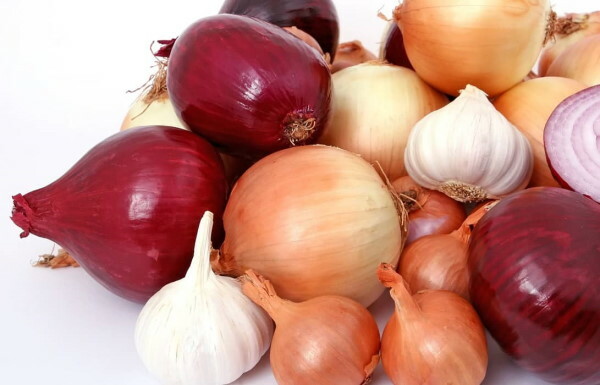
Onion allergy
Such herbal ingredients successfully replace fennel, radish, celery. Avoiding the use of cosmetics with onion extracts will help prevent the occurrence of allergic reactions.
Reducing the likelihood of a sharp immune response allows the use of dishes with provoking ingredients fried, boiled or stewed. Onions are not recommended to be included in baby food until 2-3 years old.
First aid for severe complications
The allergic reaction provoked by LTP proteins is mild. Severe complications arise only against the background of a physiological predisposition or congenital anaphylaxis.
In such patients, angioedema of the superficial epidermis, subcutaneous fatty tissue and mucous membranes may develop. The danger of a pathological condition lies in the narrowing of the respiratory lumen and an increase in the permeability of the walls of the bloodstream.
Angioneurotic edema captures the neck, face, limbs. In severe cases, respiratory failure increases in combination with impaired intestinal peristaltic function.
The defeat of cerebral tissues can lead to a coma or neurological consequences in the form of:
- impaired coordination of movements;
- disorders of speech function;
- deterioration of vision;
- paresthesia;
- convulsive manifestations;
- muscle spasms.
First aid consists in taking venotonic drugs and fibrinolysis inhibitors, which reduce the rate of diffusional penetration of blood plasma into organ tissues.
Anaphylactic shock is a rare but extremely dangerous complication of an allergy to onion LTP proteins. An acute and rapidly growing pathological process combines hemodynamic disturbances with hypoxic manifestations.
First aid is aimed at the immediate restoration of the functions of vital organs. Glucocorticosteroids are used - prednisone or dexamethasone in tablets. Further therapeutic measures are carried out in a hospital setting.
This type of food allergy rarely causes Lyell's syndrome, a severe complication characterized by bullous lesions of a significant surface of the skin and mucous membranes.
Dehydration of tissues and nephrological dysfunctions are rapidly increasing due to toxic damage to the mechanism of glomerular filtration of the kidneys. The general physiological condition of the patient is rapidly deteriorating in a short period of time.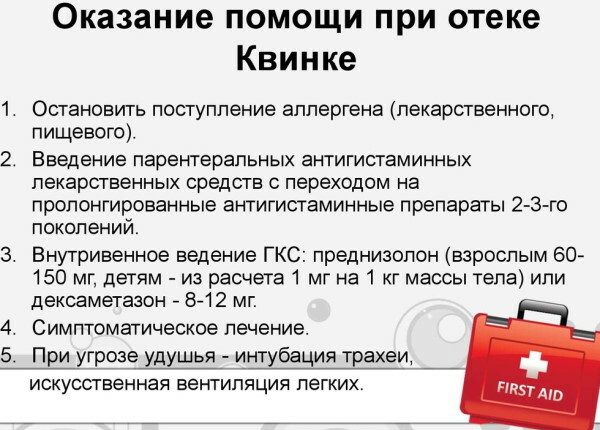
Emergency first aid involves the use of a shock dose of corticosteroid drugs, drugs to restore water-salt balance.
In case of violation of cardiac activity, a resuscitating heart massage is performed. Before the arrival of an ambulance, the patient is placed on a hard surface and air is supplied to the lungs with artificial respiration.
How to treat onion allergy?
The effectiveness of therapeutic measures depends on a properly conducted examination and a precisely established etiological factor of an allergic reaction.
Perform:
- RAST-test - a special laboratory test using the radio-sorbent method;
- analysis of the serum part of the blood for the LTP reaction;
- epithelial and skin tests;
- UAC;
- linked immunosorbent assay.
Onion allergy provides for the appointment of treatment in accordance with the patient's age, the severity of the immune response, taking into account the associated pathologies. The therapy is carried out by conservative methods. Drugs of different pharmacological groups are used.
Drug therapy
Treatment involves the complex intake of enterosorbents, histamine receptor blockers, corticosteroids. The former are designed to eliminate the toxic effects of allergens and evacuate xenobiotics from the digestive system.
Effective enterosorbents are presented in the table:
| A drug | Pharmacodynamic properties |
| Enterosgel | The drug has a special porous structure of the organosilicon matrix of the hydrophobic class. Has a sorption effect on toxic metabolites with molecules of medium size. Differs in pronounced detoxification properties.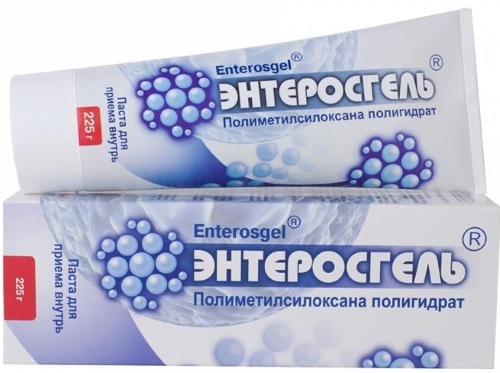
|
| Polyphepan | A drug with a high ability to bind allergens and a nonspecific detoxification effect. Polyphepan is used for acute allergic reactions. In the intestinal lumen, the active substance of the drug binds and evacuates products of bacterial vital activity, food allergens, and salts of heavy metals. |
| Polysorb | Medicinal product of inorganic origin with non-selective detoxification effect. Belongs to the class of multifunctional enterosorbents. The chemical formula is based on highly dispersed silica. Oral absorption capacity reaches 300 m2/г. |
| Smecta | The drug is a double aluminosilicate of natural origin with a pronounced adsorbing effect. Smecta stabilizes the functions of the mucous membrane, improves its barrier properties, increases the cytoprotective parameters of the gastrointestinal epithelium. |
For quick first aid, activated carbon is used. Antihistamines are considered standard therapy for any allergic reaction.
Common drugs of this pharmacological group are Zyrtec, Zodak Express, Suprastin. For external use and elimination of skin manifestations of anaphylaxis, ointment formulations based on hydrocortisone are suitable.
In case of severe and acute allergic reactions, resuscitation measures with respiratory support, infusion of high doses of glucorticosteroids are carried out. Hormonal drugs have a pronounced anti-shock effect and a powerful anti-inflammatory effect.
Of particular importance in acute allergic reactions is the ability of glucorticosteroids to suppress excessive activity of the immune system. For severe complications associated with heart failure, adrenaline injections are used.
Traditional methods
Moderate allergic reactions to onions can be eliminated with unconventional recipes. Before using methods not recognized by evidence-based medicine, it is necessary to consult with an allergist.
Several herbal remedies potentiate the anaphylactic properties of LTP proteins and cause cross-reactions.
To eliminate nasal congestion and alleviate the symptoms of rhinitis, use:
- yarrow;
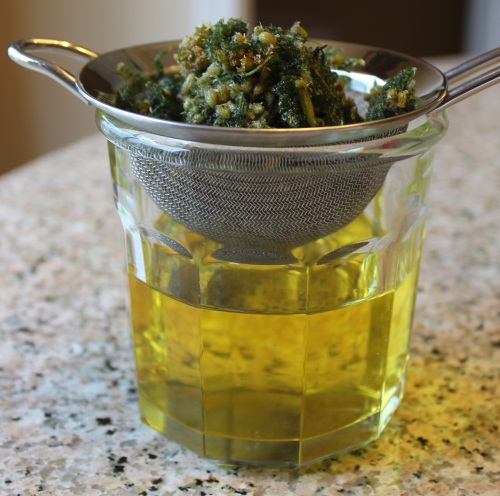
- tricolor violet;
- viburnum bark extract;
- decoction of nettle;
- pharmacy chamomile;
- mummy.
Drinking solutions for oral administration are prepared from such natural raw materials in a volume of 200-500 ml per day. Relieves itching and relieves swelling of the skin with a mixture of apple juice with cucumber.
A similar effect is attributed to warm potato gruel. The clinical effectiveness of such folk remedies has not been proven.
To eliminate dermatological manifestations of food allergies, the following are used:
- decoction of the string in the form of a compress;
- adding chamomile powder to the bath;
- ground oats in the form of a drinking solution;
- Jerusalem artichoke root.
Skin inflammations are suppressed with calendula tincture, a mixture of dandelion and burdock. Traditional medicine endows with identical properties a decoction of oak bark, aloe and rosehip oil.
To achieve an antihistamine effect, tea is prepared from the branches and leaves of black currant. Puffiness of the larynx is removed with a solution of warm water with motherwort and drops of valerian, which additionally has a calming effect.
Traditional methods cannot serve as an adequate alternative to full-fledged drug therapy for any type of food allergy. Elimination of a sharp immune response to LTP proteins contained in onions requires complex treatment with evidence-based medicine.
Onion allergy video
Onion allergy:
